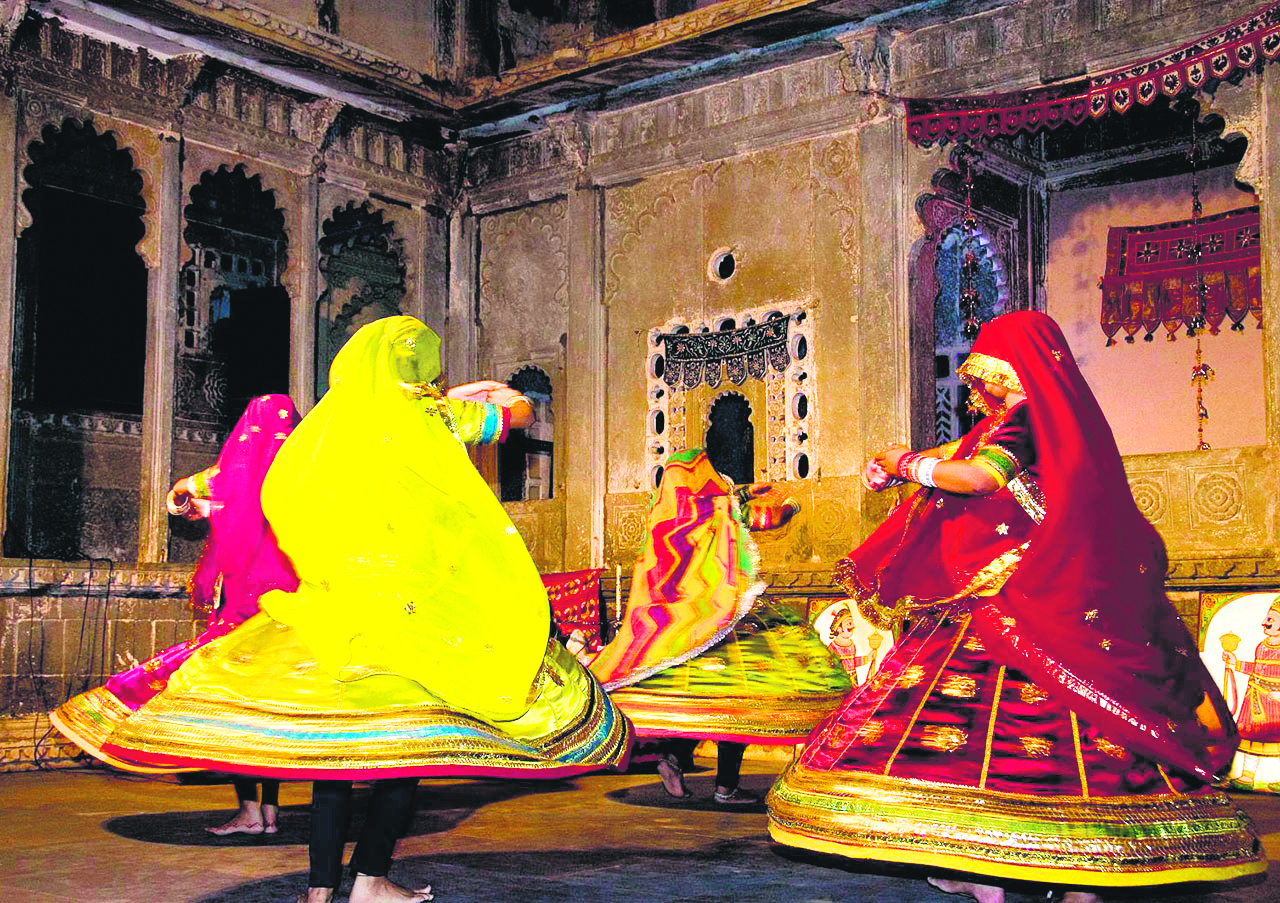
Ghoomar, one of the most iconic and cherished folk dances of Rajasthan, embodies the rich cultural heritage and vibrant traditions of this colorful Indian state. With its graceful movements, swirling skirts, and rhythmic beats, Ghoomar captivates audiences with its beauty and elegance while celebrating the joyous spirit of Rajasthani culture.
Origins and History
The origins of Ghoomar can be traced back to the royal courts of Rajasthan, where it was performed by women on auspicious occasions, festivals, and weddings. The word “Ghoomar” is derived from the Rajasthani term “ghoomna,” which means to twirl or rotate. Over the centuries, Ghoomar evolved from a traditional ritual dance performed exclusively by women to a popular form of entertainment enjoyed by people of all ages and backgrounds.
Performance and Style
Ghoomar is characterized by its graceful and fluid movements, accompanied by lively folk music and rhythmic clapping. Dancers, typically dressed in vibrant and colorful attire, including flowing skirts (ghagras) adorned with intricate embroidery and mirror work, perform intricate footwork and twirls in sync with the music. The dance is marked by circular rotations, where dancers gracefully spin and twirl while moving in a synchronized manner.
One of the most striking features of Ghoomar is the use of elaborate hand gestures, known as “mudras,” which convey a wide range of emotions and expressions. These hand movements, combined with the dancers’ graceful spins and twirls, create a mesmerizing spectacle that captivates audiences and leaves a lasting impression.
Symbolism and Significance
Ghoomar holds deep cultural and social significance in Rajasthani society, symbolizing joy, celebration, and communal harmony. Traditionally performed by women from various communities, Ghoomar serves as a form of self-expression and empowerment, allowing women to showcase their talent, grace, and creativity.
The dance is often accompanied by traditional Rajasthani folk songs, known as “ghoomar geet,” which narrate tales of love, valor, and everyday life in the desert regions. These songs, passed down through generations, add depth and meaning to the performance, reflecting the rich oral traditions of Rajasthani culture.
Celebration and Preservation
Today, Ghoomar continues to be celebrated and cherished as an integral part of Rajasthan’s cultural identity. From village fairs and folk festivals to grand weddings and cultural events, Ghoomar is performed with passion and pride, keeping alive the traditions of the past while embracing the spirit of modernity.
Efforts are underway to preserve and promote Ghoomar as a cultural heritage of Rajasthan, with initiatives focusing on training young dancers, documenting traditional dance techniques, and showcasing Ghoomar on national and international platforms. Through these endeavors, Ghoomar remains a symbol of Rajasthan’s rich cultural legacy, captivating audiences with its timeless beauty and enduring appeal.
In conclusion, Ghoomar stands as a testament to the artistic creativity, cultural diversity, and enduring spirit of Rajasthan. With its graceful movements, vibrant costumes, and rhythmic melodies, Ghoomar continues to enchant and inspire audiences around the world, celebrating the rich tapestry of Rajasthani culture and heritage.